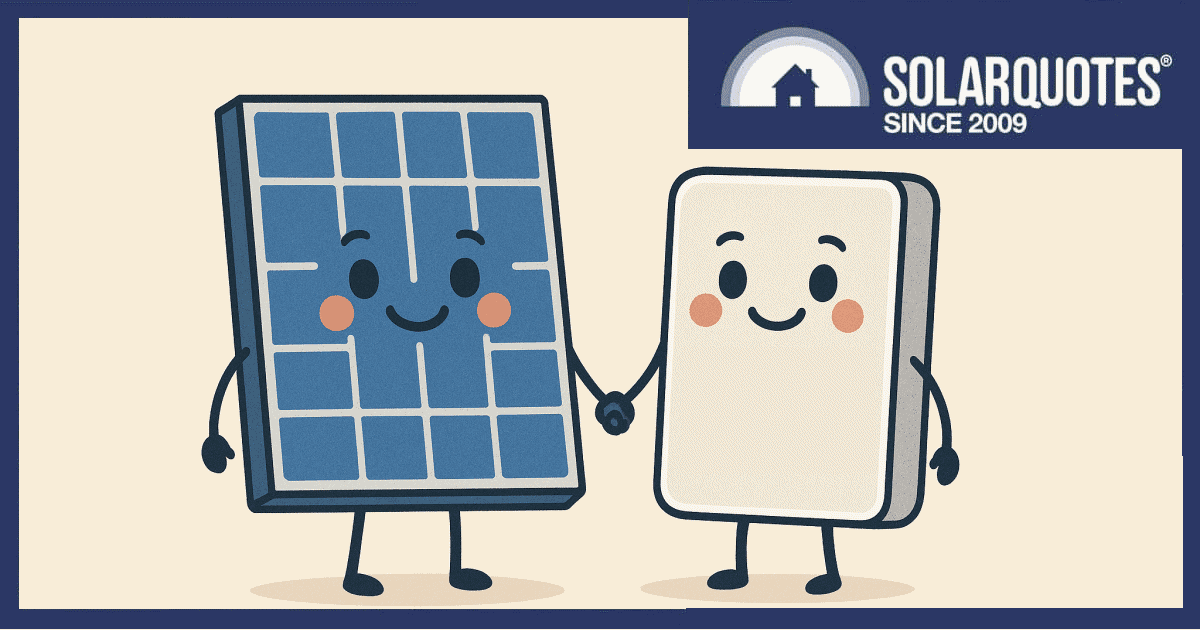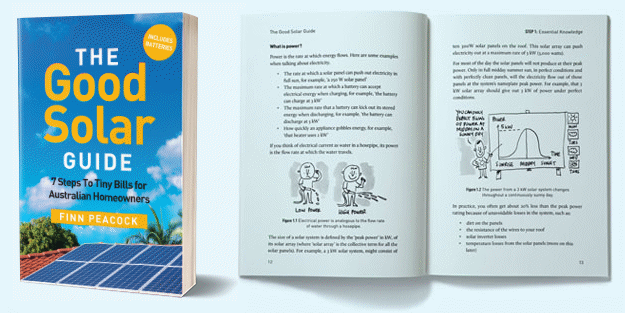
A partnership between energy retailer Alinta Energy and NRN (National Renewable Network) is offering households complete solar and battery systems with no upfront cost, no financing, and no repayments. So, how does this work?
After a pilot last year with 50 customers in New South Wales, ‘Solar Together‘ is now available across NSW and South Australia, with plans to expand into Victoria and Queensland in the months ahead.
Solar Together involves having a solar and battery system installed at zero upfront cost and the customer being put on a special Alinta Energy power plan (a bundled NRN partner plan), with *all* electricity consumed by the household charged under that. These systems are also connected to a Virtual Power Plant (VPP) operated by NRN.
“We built this platform to be flexible, fast, and scalable,” said Alan Hunter, NRN founder and CEO. “And we’ve proven it. This is what the next phase of the energy transition looks like, shared systems, aligned interests, and smarter infrastructure.”
There’s nothing to monitor, tweak or manage. Alinta Energy pays for the installation and upkeep, and NRN takes full responsibility for maintaining, monitoring, servicing and end-of-life management of the system. But Solar Together customers don’t receive any solar feed-in tariff or have any control over the system. Customers just essentially host the system for 12 years in exchange for (hopefully) cheaper electricity bills, before owning it outright.
I was under the impression that taking ownership after this period wouldn’t involve any costs, but the NRN FAQ page stated:
“If, after twelve years, you choose to continue with the NRN plans, we will upgrade your battery and inverter at no extra charge. Alternatively, you’ll have the opportunity to purchase or remove the system if that suits your plans.”
Added: NRN have confirmed you can either keep the system for no charge or have your system upgraded with a new battery and inverter, and continue with NRN. They’ve also since updated their FAQ to reflect this.
And it’s worth noting the battery warranty will likely be over by that time as most battery warranties are 10 years; (added: although under this arrangement, it’s 12 years).
Alinta’s Solar Together page is a bit light on detail, but NRN provided the following additional information.
System Sizes Available
The smallest system starts at 6.6 kW of solar panels and 15.4 kWh of battery storage, while the largest is 17.6 kW of solar and 31.2 kWh of battery storage. The optimal size is gauged for each customer based on roof area and the household’s energy usage.
Equipment Brands
Current suppliers include:
Early Exit Fees
While there are no fees to leave Solar Together per se, if a customer chooses not to move to another bundled NRN partner plan, they will be shifted onto NRN Unbundled. This includes a ‘daily licence fee’ for the system, with the cost depending on system size. The customer will then pay the standard rates and fees of their new plan, but will also get a feed-in tariff if one is offered.
Buying The System Outright
The cost of buying a system outright will depend on the system size. An example provided: if a system costs $24,115, the purchase price reduces by $2,010 each year (~8.3% reduction based on original price annually). The customer can buy the system at any time for the remaining depreciated value, with zero interest added. Before a customer signs up, they will be given the exact price for the buyout through the agreement.
It’s worth comparing NRN buy outright system costs vs. having the same package installed by a *good* installer to see what the difference in price is.
Solar Together Electricity Plan Rates
Consumption rates depend on the energy distributor in each state or area. Solar Together rates (assumed: Time of Use) align with the Default Market Offer (DMO) for each region, and the DMO is usually more expensive than market offers. But daily supply charges, typically more than a dollar a day, are reduced to 11 cents per day. Still, compare electricity retailer plans to see if the Solar Together plan is suited to your household energy consumption profile.
Other Options
Don’t forget — and it would be hard to given the broad coverage in recent months — Australia’s solar rebate and the recently launched national Cheaper Home Batteries program can knock many thousands off the up-front cost of installing a solar and battery system; one you’ll have full control over from the get-go and will provide greater electricity bill savings. Purchase of a solar power + energy storage system that may have been out of reach just a few months ago could now be within your grasp.
Even if you don’t have the upfront cash needed, many installers are offering zero-upfront cost payment plans through arrangements with Buy Now, Pay Later (BNPL) providers. While BNPL has its own issues, repayments can be less than electricity bill savings, so it’s also worth seeing how these payment plans combined with choosing your own electricity retailer stack up against the costs of Solar Together.

 RSS - Posts
RSS - Posts



It is difficult to see how, for your own home, you aren’t better simply owning a solar + battery, because even if financed as a mortgage addition your savings are more than the additional payments.
The positive opening I see for this though is with landlords, because they pay the mortgage while the tenant pays the bills. 0$ up front plus the one-stop-shop to arrange it might push them off the more common path of least resistance, which is to do nothing.
The recent Bunnings – Zelora subscription model offering is similar in this regard of hopefully moving some rentals into the transition.
The possibility is that a tenant could push it along too. If they are at least able to communicate with their landlord: “Please look at this Alinta / NRN offer and this Bunnings / Zelora one and let me make one of them happen for you”.
It’s a joke. Simply put, they rent our roof and battery space to make money while paying us nothing.
We are on a NRN agreement already, and existing customers are being encouraged to move from existing VPP participants (we are with Diamond Energy) to Alinta. Apparently Diamond is withdrawing from the scheme, and unfortunately Alinta doesn’t have the same 0.18c kwh flat rate when consuming energy from the PV/battery meaning it will almost certainly cost us more. Our agreement is for 10 years not 12
There is no such thing as a free Lunch
One thing I learnt very early in life.
NOTHING IS FREE
I have 5kw system, no battery. Just after 10 years half of the system just died, 2.5k workin bu recently my rates changes to $1.07/day supply charge, 26.52c anytime energy. Im confused niw if it still worth upgrading the system plus adding a battery.
Installers have heaps of inverters they are ripping out daily.
Get a Fronius and spend the $300 to have the sparkie swap it for what’s there
Rest of the system will likely be fine.